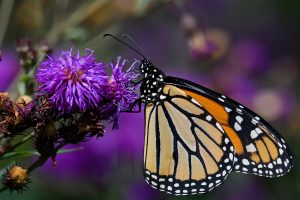Ironweed: The resilient perennial transforming North Carolina landscapes
We all want resilient plants for our landscape. Frankly we want something that is cost effective. A plant which fulfills that description and expectation is “Ironweed” (Vernonia noveboracensis). This seems to be the most common variety grown in North Carolina. Anne Clapp used to say: “A weed is a plant you don’t want in your yard,” but you definitely will want Ironweed! It is a popular and hardy herbaceous perennial that you’ll find in a lot of landscapes in North Carolina. Herbaceous means it does not have a woody stem and dies back to the ground after it flowers. By the way, “Ironweed” was named for the English botanist William Vernon who traveled extensively in the late 1600’s and early 1700’s.




